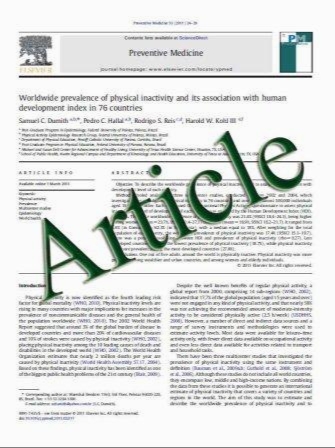Eicosapentaenoic Acid Attenuates Progression of Hepatic Fibrosis with Inhibition of Reactive Oxygen Species Production in Rats Fed Methionine- and Choline-Deficient Diet
- نوع فایل : کتاب
- زبان : انگلیسی
- مؤلف : Satoshi Kajikawa Kazunori Imada Takashi Takeuchi Yutaka Shimizu Akiko Kawashima Tsuyoshi Harada Kiyoshi Mizuguchi
- چاپ و سال / کشور: 2010
Description
Background and Aims Nonalcoholic steatohepatitis (NASH) is associated with fat accumulation in the liver, and develops to cirrhosis with the progression of hepatic fibrosis. Eicosapentaenoic acid (EPA) is used to treat hyperlipidemia, and suppresses hepatic fat accumulation. As the effect of EPA on NASH remains unclear, we assessed the therapeutic effect of EPA and its mechanisms in an animal model of NASH. Methods Wistar rats were fed a methionine- and cholinedeficient (MCD) diet for 20 weeks, and given EPA ethyl ester (EPA-E, 1,000 mg/kg/day) or vehicle by gavage from week 12, at which hepatic fibrosis has already established. The liver was histologically analyzed for fibrosis and a-smooth muscle actin (aSMA) expression, and hepatic levels of transforming growth factor-b1 (TGF-b1), fibrogenic gene expression, reactive oxygen species (ROS), and triglyceride (TG) content were determined. Serum oxidative markers were also measured. Results EPA-E treatment significantly suppressed the MCD-induced increase in fibrotic area of liver sections, with repressed macronodule formation. EPA-E also suppressed increases in hepatic fibrogenic factors, aSMA expression, TGF-b1 level, and messenger RNA (mRNA) levels of procollagens and connective tissue growth factor. EPA-E reduced MCD-induced increases in hepatic ROS level, serum oxidative markers, 8-isoprostane and ferritin, and hepatic TG content. Attenuation of hepatic fibrosis by EPA-E was significantly correlated with hepatic ROS level, but not TG content. Conclusions EPA-E attenuates progression of hepatic fibrosis in developed steatohepatitis, and this effect is likely mediated by inhibition of ROS production. These actions may elicit the therapeutic effect of EPA-E against NASH.
Dig Dis Sci (2011) 56:1065–1074 DOI 10.1007/s10620-010-1400-5 Received: 8 April 2010 / Accepted: 12 August 2010 / Published online: 17 September 2010


